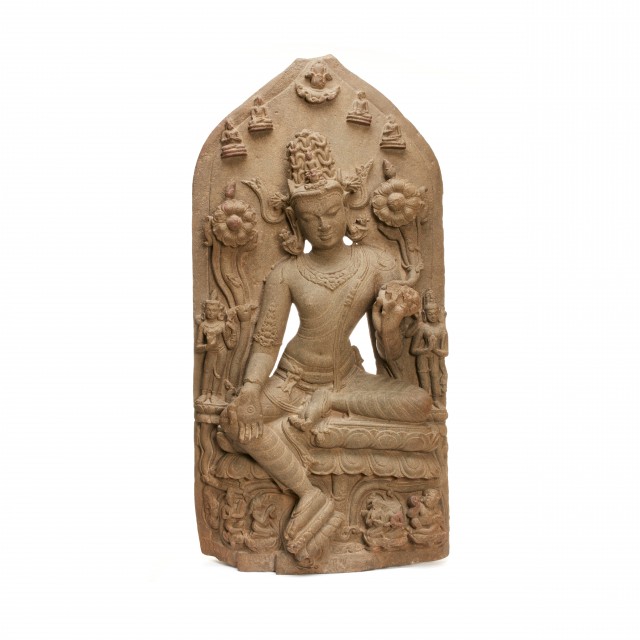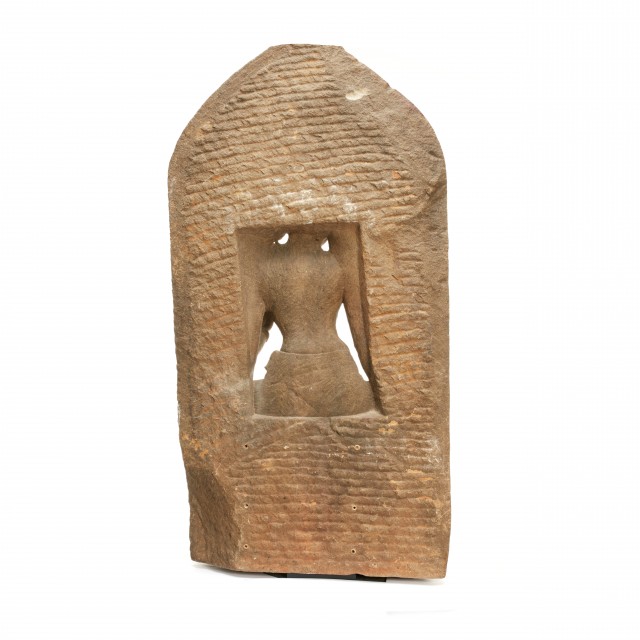Bodhisattva Avalokiteshvara in the Form of Khasarpana Lokeshvara

Photography by Synthescape, Digital image © Asia Society

Photography by Synthescape, Digital image © Asia Society
Bodhisattva Avalokiteshvara in the Form of Khasarpana Lokeshvara
Late 11th-early 12th century
India, Bengal
Schist
H. 37 1/2 x W. 18 1/2 x D. 6 3/4 in. (95.3 x 47 x 17.2 cm)
Asia Society, New York: Mr. and Mrs. John D. Rockefeller 3rd Collection, 1979.40
Provenance
John D. Rockefeller 3rd, New York, NY; acquired from Heeramaneck Galleries, New York, NY in 1963.
The Asia Society, New York, NY, bequest of John D. Rockefeller 3rd, New York, NY, 1979.
Licensing inquiries
Avalokiteshvara, the Bodhisattva of Compassion, can be identified by the large lotus he holds in his left hand and by the image of a seated Buddha, Amitabha, in his headdress. This composition illustrates the belief that Avalokiteshvara feeds even beings known as "hungry ghosts" as a symbol of his compassion for all living creatures. Because of lustful and greedy acts in former lives, hungry ghosts suffer from insatiable hunger, but they have tiny mouths and narrow necks and can't satisfy their bloated stomachs. Directly underneath Avalokiteshvara's outstretched right hand, which is held in the gesture of gift-giving, sits a hungry ghost known as Suchimukha. Suchimukha, whose name means "needle-nosed," is being fed by drops of nectar which flow from Avalokiteshvara's fingers.


